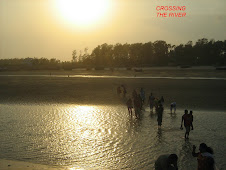


Buddhists worldwide look upon India as the land of the Buddha and a visit to this country means a pilgrimage to those places sacred to the memory of the Enlightened One. After the Buddha attained enlightenment in Bodh Gaya he came to sarnath. Here in the Deer Park, he delivered his first sermon, or in religious language, set in motion the wheel of Law (maha- Dharma chakra Pravartan). On the day before his death Buddha included Sarnath along with Lumbini, Bodh Gaya and Kushinagar as the four places he thought to be sacred to his followers.
Starting from the time of Buddha, monastic tradition flourished for over 1,500 years on the site of the Deer Park. Amongst the many ruins, archaeologists have found traces dating from as early as the third century BC. The existing inscription of Ashoka's pillar, dating from that time, implies that a monastery was already established during Ashoka's reign. Fa Hien speaks of two monasteries with monks in residence. Two centuries later, Heun Tsang described a Mahavihara encompassing eight divisions. It comprised of a great temple with ornate balconies, over one hundred niches containing gilt images in its walls and a statue of Buddha in the teaching posture.
The Emperor Ashoka, who spread the Buddha’s message of love and compassion throughout his vast empire, visited Sarnath around 234BC,and erected a stupa here. Several Buddhist structures were raised at Sarnath between the 3rdcentury BC and the 11th century AD, and today it presents the most expansive ruins amongst places on the Buddhist trail. Sarnath is 10 km from the holy city of Varanasi, and is an exceedingly tranquil place. The ruins, the museum and temple are all within walking distance.
The most remarkable structure at Sarnath, is the cylindrical Dhamek Stupa, 28 mts in diameter at the base and 43.6 mts in height, built partly of stone and partly of brick. The stone facing the lower part is adorned with delicate floral carvings of Gupta origin.
Sarnath yielded a rich collection of sculptures comprising numerous Buddha and Bodhisattva images. Consideredamongst the finest specimens of Buddhist art, these have been housed at the museum, adjiacent to the site. The museum is open from 10 am to 5 pm, and closed on Fridays. Apart from the above the other objects of lnterest at Sarnath are the Dharmrajika Stup, magnificent Lion capital, India’s National Emblem at Sarnath museum, the Saddharmachakra Vihar’s at excavated ruins.There is another impresive architecture at Sarnath known as Sita ki Rosoi, ( The Kitchen of Sita ,wife of Sri Ramchandra).
It is an Islamic architecture erected by Emperor Humayun on the ruins of a Buddhist Stupa. There are quite a number of pagodas .
The place is visited by pilgrims and tourists from all parts of the world.
























